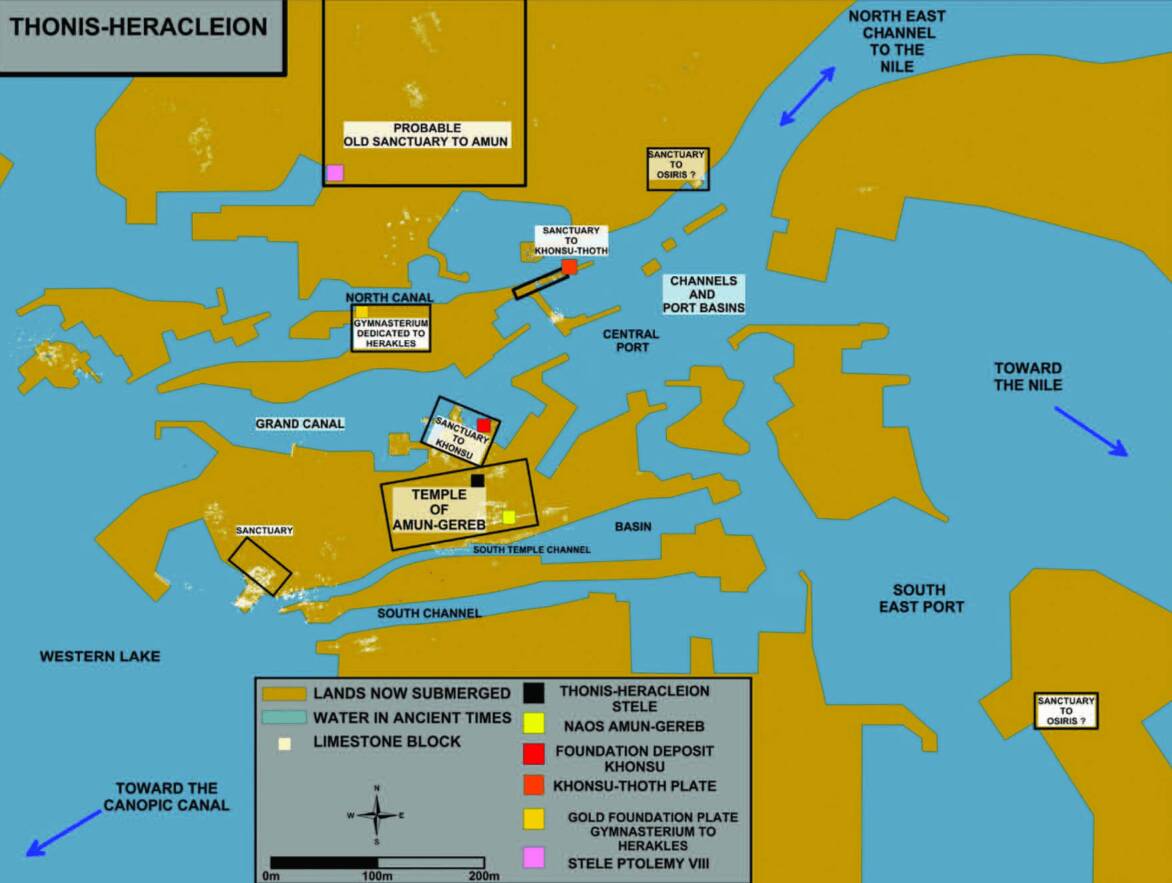Thonis Heracleion: the disappeared city that preceded Alexandria in Egypt

In the city of Alexandria in Egypt, the Mediterranean Sea has revealed the remains of two ancient temples: one dedicated to the Egyptian deity Amun and the other to the Greek goddess Aphrodite, part of a city preceding that of Alexander the Great and which, for a certain period, it was one of the major ports of the Mediterranean, but it was devastated by nature.
A joint Egyptian-French archaeological effort discovered the remains in the submerged ancient city of Thonis-Heracleion, located seven kilometers from Abou Qir Bay.
The European Institute of Underwater Archeology (IEASM), which has been conducting research in this location since its head Franck Goddio first discovered it in 2000, announced the discovery.
The team assigned a mid-2nd century BC date to the catastrophe thought to have caused the collapse of the enormous stone slabs that make up the ruins of the temple of Amun .
Priceless treasures from the temple treasury were found in the ruins, including gold jewelry, alabaster vessels used to store perfumes, and silver ritual tools.
The institution said they “testify to the richness of this sanctuary and the piety of the previous inhabitants of the port city.”
A few meters below the temple ruins, underground buildings dating back to the 5th century were discovered. These buildings were still supported by the original wooden supports and beams. The mission's discovery was facilitated by modern exploration technologies that made it possible to locate artifacts buried under several meters of clay.
This second site was a sanctuary dedicated to the Greek goddess Aphrodite, bronze and ceramic artefacts were found. The artifacts found in the temple of Amun appear to have been produced in Greece and then brought to Egypt.
Before the founding of Alexandria in 331 BC, Thonis-Heracleion was Egypt's principal port on the Mediterranean Sea for many years.
Following earthquakes that generated tidal waves and the liquefaction of the ground that buried 110 square kilometers of the Nile Delta, the city was submerged.
The presence of temples dedicated to Greek deities such as Aphrondite testifies to the fact that trade between the two parties was extremely flourishing and that Greek colonists were allowed to settle in the area and build their own sanctuaries alongside the local ones. The city also had two names: Thomis for the Egyptians, and Heraclion, from the name of the mythical demigod Heracles, who visited it, for the Greeks.
They were guarding the entrance to the kingdom at the Canopic branch of the mouth of the Nile. According to the institute, this branch was the largest and most easily navigable in antiquity.
Since the discovery of the buried city, numerous artifacts have been unearthed, including 64 ships, 700 anchors, a hoard of gold coins, five-meter-high statues and, perhaps most significantly, the ruins of a great temple of the god Amun-Jereb.
Thonis-Heracleion: The Sunken Jewel of Ancient Egypt
Thonis-Heracleion, once an important and bustling port city of ancient Egypt, now lies submerged beneath the waters of the Mediterranean Sea, near the modern city of Alexandria. Its rediscovery in recent times has provided valuable insights into the rich tapestry of ancient Egypt's history, trade and cultural interactions with other Mediterranean civilizations.
The city was an important trading port around the 1st millennium BC, serving as a vital trade hub for the Mediterranean world and the Nile Delta.
The city had a large temple dedicated to the god Amon. It played a vital role in some religious ceremonies, including the annual celebration in which statues of the gods were brought on boats from the Nile to the temple.
The ruins of Thonis-Heracleion were rediscovered in 2001 by a team led by French underwater archaeologist Franck Goddio. The city was found submerged under about 10 meters of water in Aboukir Bay.
The disappearance of the ancient city, which preceded Alexandria, was due to natural factors, but it is not clear whether they were sudden or slow and progressive. On the one hand there are traces of strong earthquakes with soil liquefaction phenomena which literally caused the structures in the city to sink. However, this phenomenon could also have been accompanied by progressive bradyseism which would have submerged a large part of the city.
All this reveals how there is still a lot to discover in the Mediterranean.

Thanks to our Telegram channel you can stay updated on the publication of new Economic Scenarios articles.
The article Thonis Heracleion: the vanished city that preceded Alexandria in Egypt comes from Economic Scenarios .
This is a machine translation of a post published on Scenari Economici at the URL https://scenarieconomici.it/thonis-heracleion-la-citta-scomparsa-che-precedetta-alessandria-degitto/ on Mon, 25 Dec 2023 19:03:54 +0000.

